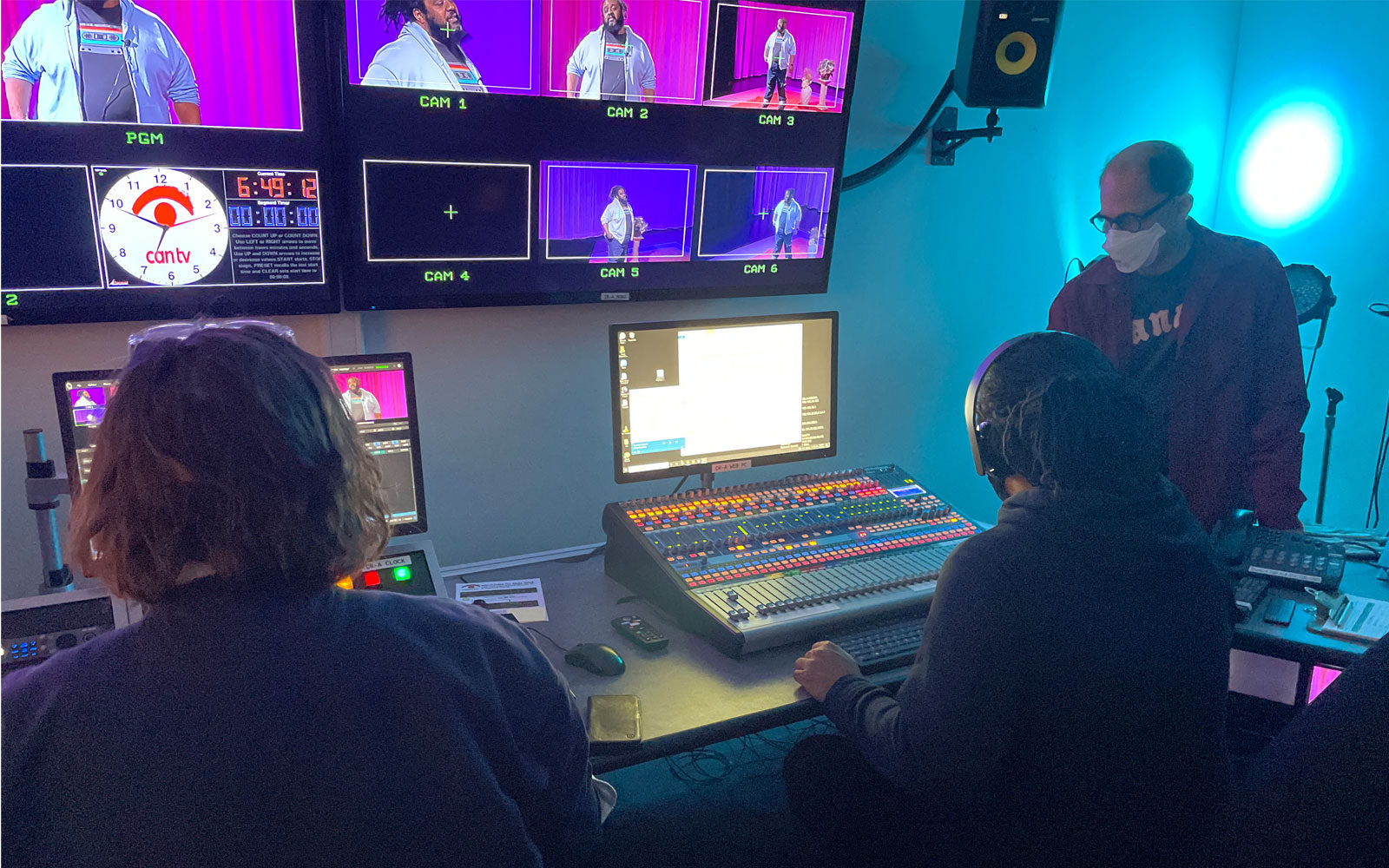Tips for Making Video at Home
– by Eric Torres: etorres@cantv.org
April, 2020
I don’t know about you, but in times like these my spirit yearns for a creative outlet to express what I’m feeling on a daily basis. Video is a great way to capture those feelings, and to document them for later reflection. If you’ve taken any production classes at CAN TV, then you are already prepared to put those camera, lighting, and audio skills to use, albeit with a cellphone or other device.

My first suggestion for those seeking to create a short, simple video for uploading to social media, and eventually to CAN TV’s channels, is to put your own smartphone or small camera to use. You can apply some basic principles for good results, just as you would with the more professional equipment taught in our classes.
Lighting:
Position your phone or camera carefully in relation to room lights. Avoid windows with strong light that can easily overwhelm your sensitive phone sensor and blow-out faces. Also avoid positioning in front of a window – this can turn the subject into a silhouette. Make sure that your phone lens is clean. Also, be aware of color temperatures, the light being unintentionally cold blue or deep yellow; make changes if necessary to your choice of lights, or the bulbs that are in them. Position the light broadly from your subject’s eye-level; control contrast by using more than one light coming from multiple angles.

Make sure that your little phone lens is nice and clean, lest your image appear to be recorded in a London fog:
Be aware of color temperatures, the light being unintentionally cold blue or deep yellow; make changes if necessary to your choice of lights, or the bulbs that are in them.
Try to cast light broadly from your subject’s eye-level; reposition either the subject or the light. Control contrast by using more than one light coming from multiple angles.
Try to keep your background simple, if you want to focus more attention on the subject.
Mood Effects:
Mood Effects can be created by either putting a color filter over the lighting or the camera lens itself, or shooting at a certain time of day.

Sunset (“Magic Hour”)

Stabilization:
Hand-held is okay for selfies if you keep steady and obey the rules of composition such as the Rule of Thirds, sufficient nose-room when in profile or partial profile, etc.; a selfie-stick is even better, and a tripod with a phone mount is better still. If someone else is willing to help, either let them be the talent, or have them run the phone/camera to make use of the better lens on the back of the phone versus the frontal selfie camera. Since a phone is a small device, take extra care to make smooth movement with it, easing into and out of pans and tilts; imagine that it is attached to a much larger structure, and take your time. Once you complete a motion, linger on the composition for a little while before you move on to another subject.

Audio:
If you plan on editing your video and want to add an audio layer to your video, use your phone’s Voice Recorder (or “Voice Memos”) feature (usually found in an accessories folder; it is named “Folder” on the iPhone) for gathering environmental sound that you might need, or to record narration.
- Turn off sources of unwanted sound (tv, radio), and try to keep your subject close to the phone.
- Rehearse what you are going to say prior to recording.
- Speak clearly and a bit louder than you would normally speak when recording.
- If recording a voice-over, find a quiet room to record in, or even better, a closet filled with sound absorptive materials – clothes – to record in. Many mainstream journalists are doing that on a daily basis these days! Some of you may have a fancy little external microphone that hooks up to your phone; if do, by all means, use it.
Editing:
If your phone doesn’t have editing software on it already like iMovie (for iPhone), or Adobe Premiere Rush (for Android and iPhone), you can easily download one.
Just type “Video editing app for iPhone” (or Android) into a search engine and choose from the options. Editing apps for mobile devices tend to be fairly intuitive and simple to use, and are free. They have built-in features to make uploads to media sites easy.


For any questions or comments, contact CAN TV’s Training Department @ training@cantv.org.












